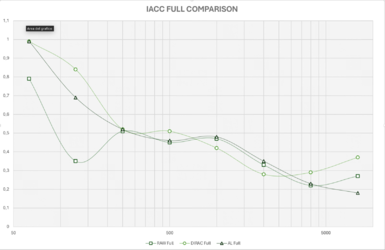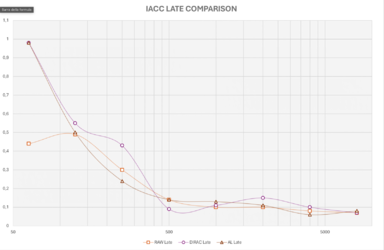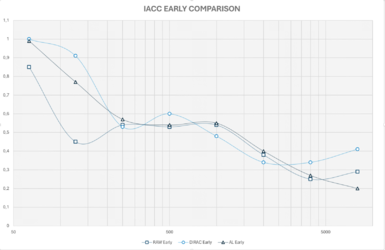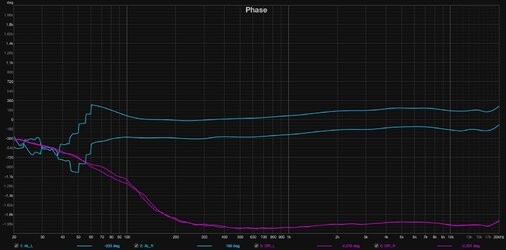Leo11
Registered
Thread Starter
- Joined
- Jul 23, 2022
- Messages
- 32
More
- Main Amp
- Hypex NC252MP
- Additional Amp
- Hypex NC502MP
- Computer Audio
- Dell notebook
- DAC
- Motu Ultralite Mk5
- Front Speakers
- NHT C3
- Subwoofers
- 2x 12" DIY Scan Speak acoustic suspension
- Streaming Subscriptions
- Amazon Music Unlimited
I'm considering to buy AL to correct my system and I'm experimenting a bit to see what can I do.
Some things are not clear to me.
When I load multiple measurements for multiseat correction and then I create the filter, AL warns me that the original measurement file will be modified to integrate new information.
And this happens every time I generate the filter.
Checking the files of the various measurements are all modified at the same time (seeing the date / time of the last modification).
The question is whether these measurements are irreversibly altered and if they are no longer faithful to the original.
The other thing that is not clear to me is if the noise reduction function must be applied singly to all the measurements for multiseat correction or it's sufficient to the main.
Regarding TTD correction, it's just an all-pass filter that corrects the impulse in the time domain or even in magnitude?
What does the correction of the room do different from the TTD instead?
Finally, experimenting with the TTD window I don't understand the way the filtered measurement approximates the GD.
Where in the raw measurement there are GD peaks, these are blunted when filtering with low FDW values.
However, by progressively increasing the width of the window, the filtered GD tends to assume at first an opposite trend to the raw one (which is what I no longer understand).
Then continuing to increase the window, in the filtered GD a peak appears in the same direction as the original one, but much higher and sharp.
Only by bringing the window values very high at the end does the filtered measurement take on the trend of the original measurement (always in terms of GD).
The problem, besides not understanding how the GD deviation should ideally be approximated respect to the raw meas, is that FDW values are unique to all speakers. But for each speaker a certain FDW value works better or worse in approximating the raw one.
It's hard to compromise for everyone using the same FDW.
Can anyone give me some tips?
@juicehifi ?
Some things are not clear to me.
When I load multiple measurements for multiseat correction and then I create the filter, AL warns me that the original measurement file will be modified to integrate new information.
And this happens every time I generate the filter.
Checking the files of the various measurements are all modified at the same time (seeing the date / time of the last modification).
The question is whether these measurements are irreversibly altered and if they are no longer faithful to the original.
The other thing that is not clear to me is if the noise reduction function must be applied singly to all the measurements for multiseat correction or it's sufficient to the main.
Regarding TTD correction, it's just an all-pass filter that corrects the impulse in the time domain or even in magnitude?
What does the correction of the room do different from the TTD instead?
Finally, experimenting with the TTD window I don't understand the way the filtered measurement approximates the GD.
Where in the raw measurement there are GD peaks, these are blunted when filtering with low FDW values.
However, by progressively increasing the width of the window, the filtered GD tends to assume at first an opposite trend to the raw one (which is what I no longer understand).
Then continuing to increase the window, in the filtered GD a peak appears in the same direction as the original one, but much higher and sharp.
Only by bringing the window values very high at the end does the filtered measurement take on the trend of the original measurement (always in terms of GD).
The problem, besides not understanding how the GD deviation should ideally be approximated respect to the raw meas, is that FDW values are unique to all speakers. But for each speaker a certain FDW value works better or worse in approximating the raw one.
It's hard to compromise for everyone using the same FDW.
Can anyone give me some tips?
@juicehifi ?
Last edited:



















